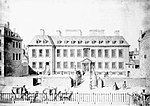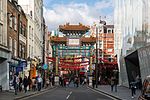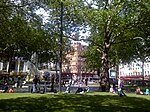Home (nightclub)
Home was a music venue and nightclub located at 1 Leicester Square in central London. Resident DJ, Paul Oakenfold, played the main room on the third floor. Bar managed by Joseph Loveland and Steven Schroder. It was closed by Westminster Council in late March 2001 due to alleged evidence of open drug-dealing occurring within the club despite its famously tough door checks. The club went into receivership shortly after it was closed. It was part of the Home nightclub chain owned by Big Beats, including the clubs in Sydney and London, as well as the Homelands outdoor festivals. The decline of the club started earlier however due to Westminster council denying the club a 6am licence.
Excerpt from the Wikipedia article Home (nightclub) (License: CC BY-SA 3.0, Authors).Home (nightclub)
Leicester Square, London Covent Garden
Geographical coordinates (GPS) Address Nearby Places Show on map
Geographical coordinates (GPS)
| Latitude | Longitude |
|---|---|
| N 51.5107 ° | E -0.1309 ° |
Address
Number One Leicester Square
Leicester Square 1-4
WC2H 7NA London, Covent Garden
England, United Kingdom
Open on Google Maps







